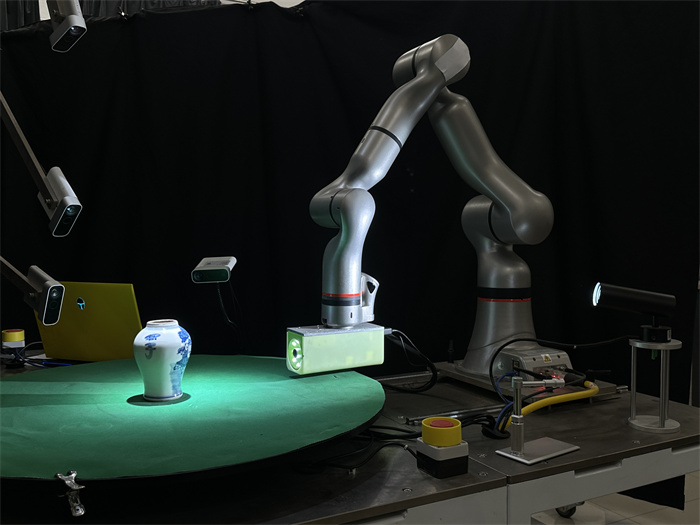Education
University team pioneers digital identity for cultural artifacts
A research team at Tianjin University has developed an innovative AI-powered system, which they have christened the Fingerprint of Things (FoT), that creates unique digital identifiers for cultural artifacts similar to human fingerprints. The team, led by Professor Feng Wei from the College of Intelligence and Computing, has successfully digitized 400 precious relics at Hunan Museum, marking a significant advancement in cultural heritage protection.
"This technology represents a major breakthrough in how we authenticate and protect cultural artifacts," said Feng.
"By creating what we call a 'natural fingerprint' for each piece, we can verify the authenticity of its identity quickly and non-invasively."
The system uses high-precision scanning and AI-powered image processing to capture microscopic surface features unique to each artifact. In a demonstration at the university's laboratory, a robotic arm-controlled microscopic camera systematically scanned artifacts, revealing details smaller than a human hair when magnified hundreds of times.

The technical innovation lies in its ability to perform autonomous recurrence of imaging conditions and 'in-situ' comparison across different scales.
"When authenticating bronze vessels, for example, the system must precisely relocalize and match specific points on the object's surface with previously recorded data," Feng added, "This capability is crucial for preventing sophisticated forgeries."
The technology has already gained traction across China's cultural sector. Since 2012, the team has been implementing their intelligent micro-change monitoring systems at various heritage sites, including the historic Mogao Grottoes in Dunhuang, the Forbidden City and the Summer Palace.
He Ye, director of the Data Center at Hunan Museum, emphasized the practical implications: "This computer vision and AI-based technology provides crucial support for our daily operations, especially during exhibitions and transportation of artifacts." The system will soon undergo expanded testing at several institutions, including Hunan Museum and Hangzhou Linping Museum.
The development of the Fingerprint of Things comes at a time when cultural institutions worldwide are seeking more reliable methods to protect and authenticate the identity of historical artifacts.
This Chinese innovation could set new standards for cultural heritage preservation in the digital age.

Copyright 1995 - . All rights reserved. The content (including but not limited to text, photo, multimedia information, etc) published in this site belongs to China Daily Information Co (CDIC). Without written authorization from CDIC, such content shall not be republished or used in any form. Note: Browsers with 1024*768 or higher resolution are suggested for this site.
Registration Number: 130349











